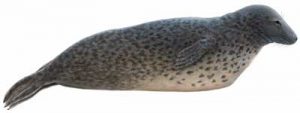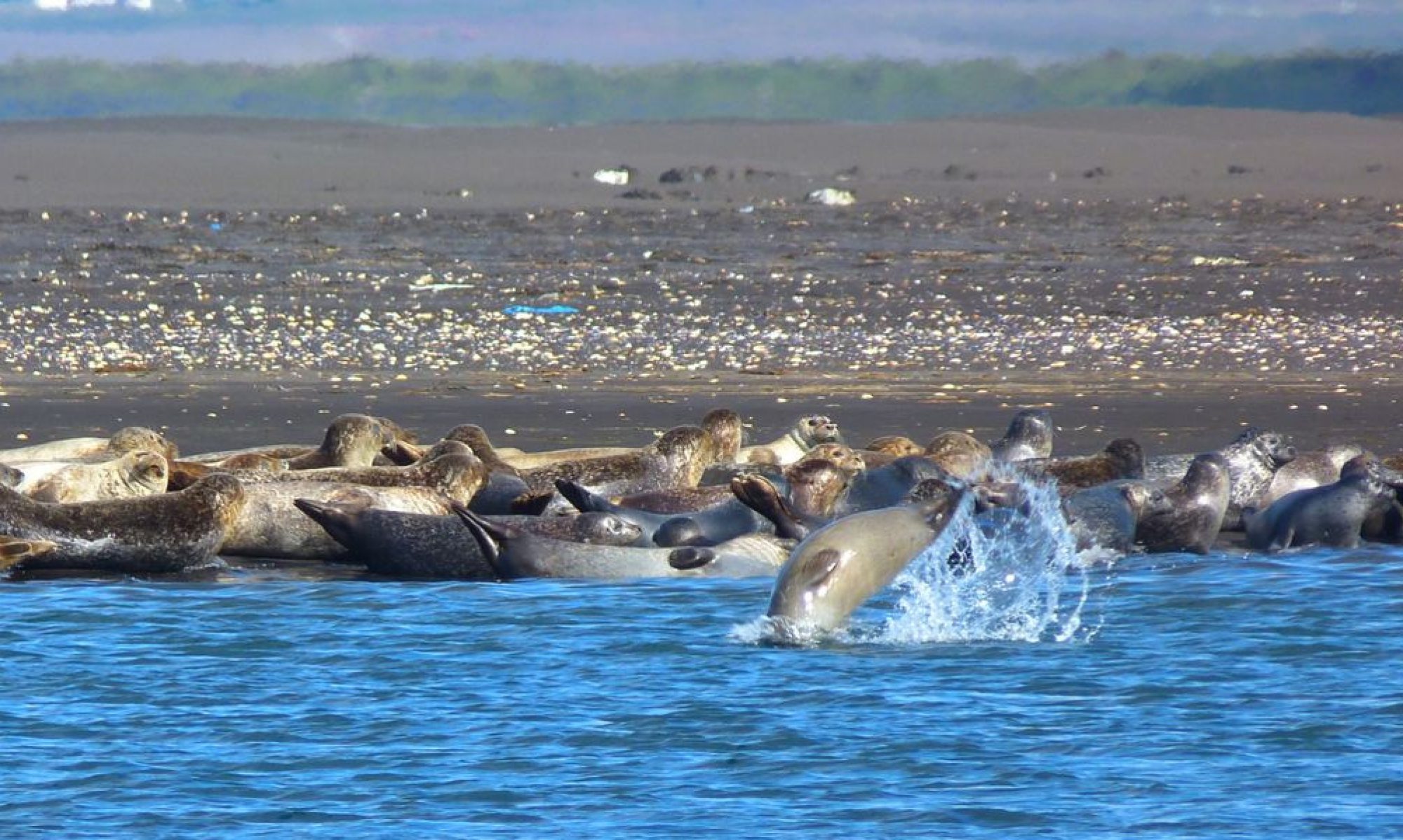
Grey seal (Halichoerus grypus)
The grey seal is much larger than the harbour seal. Adults are usually 2,5 m in length and weigh around 300 kg. The male is much larger then the female, with a higher nose, bigger head and nearly monochrome dark grey fur. While males are larger, females live longer. A male’s life expectancy is about 20-25 years but that of a female is 30-35 years. From September to November the females give birth to one pup, that usually measures 80 cm long and weighs around 12 kg. At birth, the pups are covered in long, white hair but after 3–4 weeks the animal moults and its grey coat appears. In the meantime, the pups stay on the shore, feeding on milk from their mothers.
As soon as the pups can look after themselves, the mating season starts for the pubescent seals. The males fight with one another for the right to mate with the females. Usually, the strongest male with the best stamina and the biggest fat supply wins the battle.
From March to May, the grey seals migrate from the colony to skerries and reefs where they shed their fur.
The grey seal mostly eats fish like codfishes (Gadus spp.), wolffish (Anarhichas lupus), baitfish and lumpsuckers (Cyclopterus lumpus). Around sandy shores, like the south coast, the main food supply is baitfish. Due to their size they are capable of taking larger prey than the harbour seal.
The grey seal does not travel much, except for the youngest seals which tend to wonder off from their birth colony. If the seals get interrupted or scared, due to hunting for example, they migrate to a more desirable location. Málmey Island in Skagafjörður and the famous Surtsey Island in the Vestmannaeyjar Islands, are now growing grey seal colonies.
Grey seals are distributed over the temperate waters of the North Atlantic. Very large stocks are found along the east coast of Canada (130.000 animals), and around the British Isles (100.000 animals). There are much smaller populations of around 10.000 animals each along the shores of Norway, Murmansk, Faroe Islands, Iceland and The Baltic Sea. Since the adoption of the Marine Mammal Protection Act (MMPA) in 1972, the grey seal is also expanding its range south along the Atlantic shore of the United States of America.
The Icelandic grey seal stock has declined dramatically since 1990, from 13.000 to 6000 animals. However, the number of grey seals in Húnaflói area has increased in the last few years.

